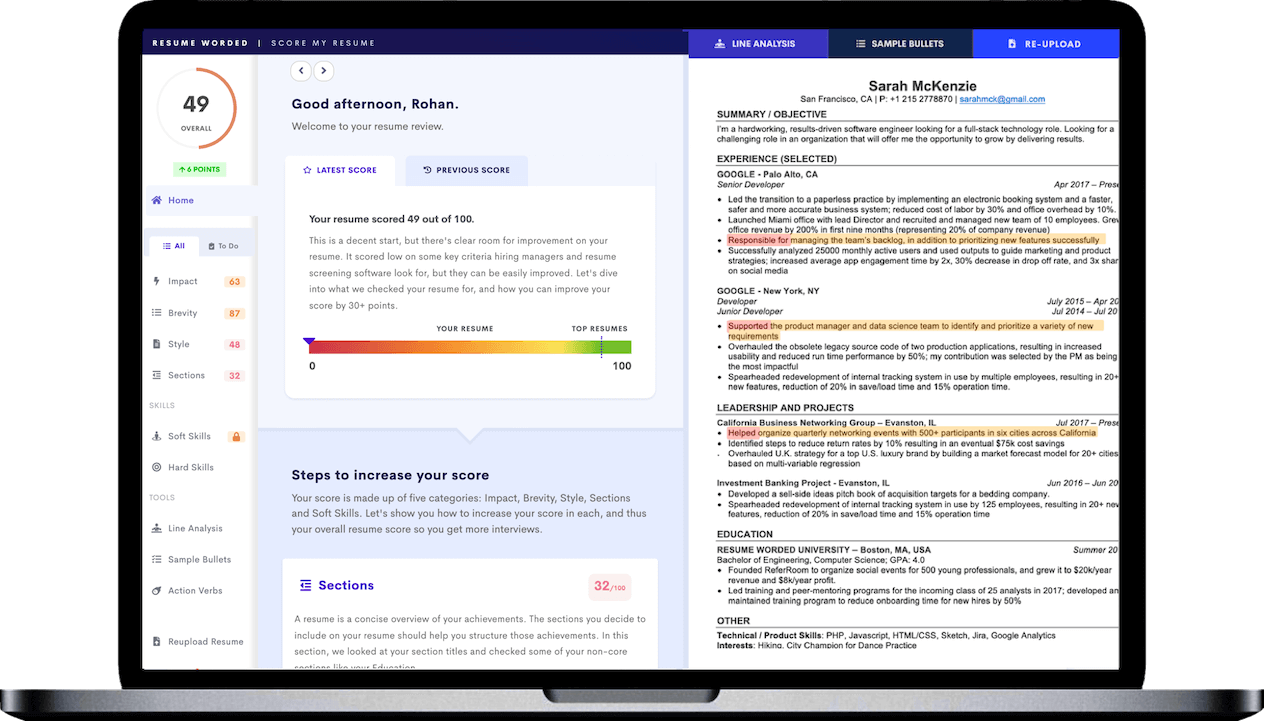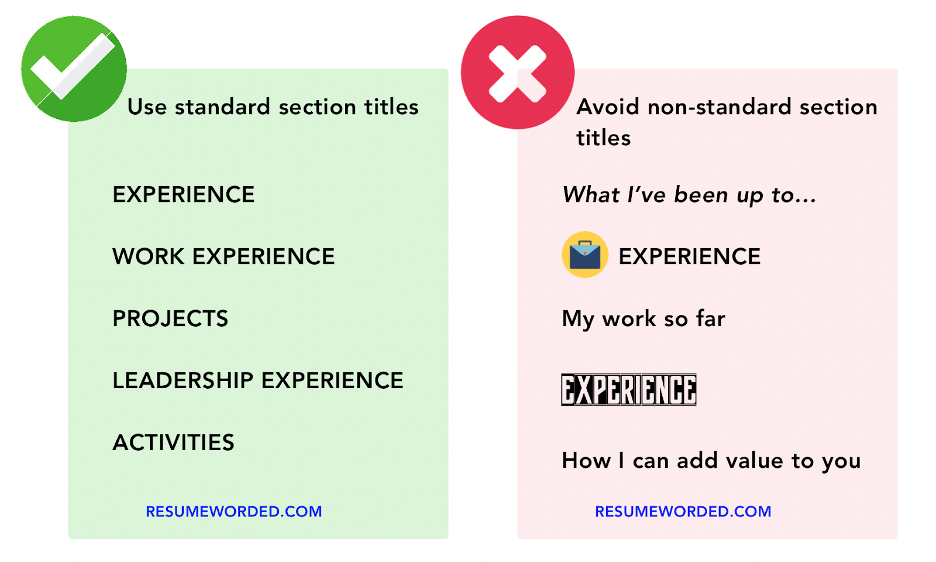Applying for jobs can be stressful, marked by uncertainty, anticipation, and sometimes even dread. If you're just starting the process, or if you've been applying for jobs for a while without success, you probably have questions like:
- How many jobs should I apply for at once?
- How many jobs should I apply for in a day? What about a week?
- How much time should I spend applying for jobs?
- How many jobs do I need to apply for before I finally get hired?
But there’s good news. With the rise in remote work opportunities and the post-pandemic employment shuffle, there’s never been a better time to look for work. If you're unemployed, about to graduate, or just looking to make a change, this guide is for you.
Let's dive in with specific, actionable advice for job seekers and the answers to your burning questions.
How many jobs should you apply for?
In general, you should aim to apply for 2-3 jobs per day, or around 10-15 jobs per week. This will give your job search the best chance of success without risking burnout or losing your motivation.
Whether you’re unemployed, just graduating or considering a career change, the golden rule when applying for jobs is quality over quantity. A few carefully selected applications will yield far more fruitful results than a large number of untailored submissions.
If you're unemployed
You know the saying, "applying for work is a full-time job?" Well, that's an exaggeration, but not a huge one. If you have the time, aim to apply for around 3-5 jobs per day. Any more than that, and you risk burning yourself out, and you’re unlikely to be submitting high-quality applications to positions that are a genuinely good fit.
If you're about to graduate
Recent or upcoming graduates should also aim for a slightly higher volume of job applications — around 15-20 per week. This accounts for the larger applicant pool you're up against, as well as the fact that you're likely applying to jobs without a lot of relevant work experience.
If you're currently employed
If you're working full-time, chances are you don't have a lot of spare time to dedicate to job hunting. The good news is, looking for jobs while you're still employed gives you a bit of leverage, so focus on sending fewer, well-tailored applications.
If you're applying for higher-level roles
If you're applying for senior management or executive positions, you should be spending the same amount of time job searching but sending out fewer applications. You may only send one application per day, but it should reflect your higher level of expertise and experience.
If you're changing careers
For applicants who are changing careers, focus on applying for 1-3 carefully selected jobs a day that value your transferable skills and experience, and align with your career goals.
How much time to spend on a job application
There's no single answer to how much time you should spend on each job application, but there are a couple of general rules to keep in mind:
- It's better to spend more time on fewer, targeted applications than rushing through many. More applications won’t increase your chances of success if those applications aren’t targeted to your skillset and career goals.
- If you're currently employed, limit your job search to 10-15 hours per week at night and on the weekend.
- If you’re unemployed, dedicate at least 20-30 hours a week to your job hunt. This is also a good way to make sure you stay eligible for unemployment, since most states have an active job search requirement in place.
- The higher the job level, the more time you should spend on your application. If you're applying for a bunch of similar entry-level jobs, each application may only need a few tweaks to personalize it, but if you're aiming for management and executive positions, plan to spend several hours on each application.
How many jobs should you apply for in total?
Unfortunately, there’s no "magic number" of jobs you have to apply for before you’re guaranteed a role. It all depends on what you’re looking for.
Although there's no definitive number of applications that guarantees a job, average job seekers send about 100-200 applications throughout their job search, sometimes as high as 400. Companies typically interview 6-10 individuals for each role and often require multiple rounds of interviews before extending an offer. The hiring process tends to span 3-4 weeks, and landing a new job may take up to six months.
All this means it’s important not to be disheartened if your search is taking longer than you initially thought. Give it time, focus on improving your resume, and keep applying. Your next application could be the one that comes through.
How to speed up your job search
If it feels like you're sending out endless applications without any callbacks, there are a few things you can do to speed up the process, such as developing a routine, identifying a niche, optimizing your resume and following up with recruiters and hiring managers.
Below, we discuss these strategies in detail, and further tips and tricks for improving the effectiveness of your job search.
Have a routine, and don’t overdo it
The best way to approach applying for jobs is to be consistent. Start a routine and set aside a bit of time each day or week, a few hours every morning, for example, and commit to that schedule every day, until you hit a certain goal (e.g., get five interviews, receive two offers, etc.)
Don’t try to apply in bulk or do a marathon sprint of 30 applications back-to-back in a single day. That’s likely to lower the quality of your applications and lead to burnout.
Avoid resume bombing
Avoid “resume bombing” — sending out dozens or even hundreds of low-quality applications to jobs you might not be qualified for. Instead, focus on applying for roles that are a good fit for your background, which means targeting jobs related to your experience, career goals, industry or skillset.
If you’re sending out dozens of applications every week, you might be compromising on the quality of each application. A good way to make sure you’re sending high quality applications that highlight the right skills and experience is to upload your resume to the tool below. It will give you a detailed review of your resume and personalized suggestions for improvement.
Identify specific job niches you want to apply for
For example, if you’ve just graduated with a marketing degree, skip the middle-level manager roles or positions outside the communications, marketing, sales, business development, and public relations industries. Niche down and targetentry-level jobs that fit your skillset well.
Target your resume to each job
For the best chance at success, tailor your resume to each application by targeting your resume to the individual job description, the company ethos and values, and the specific expectations of the role. It can also help to write your cover letter from scratch to make it relevant and personal.
You can easily target your resume to the job you want by including specific hard skills and keywords that are relevant to the job. Use the tool below to find industry-specific keywords and skills based on the job you’re applying for, and follow our quick and easy guide to increase the quality of each individual application.
Optimize your resume for ATS
To ensure your resume gets past Applicant Tracking Systems (software used to scan resumes and filter out unsuitable applicants) avoid complex formatting and include the wording used in the original job description.
Use a resume scanner to check that your resume is optimized for ATS, and remember to include a dedicated skills section to highlight relevant keywords and skills. You can also build your resume using an ATS-optimized template to ensure your formatting choices are suitable.
Use niche job boards
Forgoing larger job sites that contain a smorgasbord of jobs, and looking for niche job sites that only post open positions in specific industries or sub-fields, is a great way to efficiently maximize your time when job searching.
Optimize your resume for LinkedIn
Having said that, the largest and most productive job board is still LinkedIn, with its expansive network and easy-to-use application process.
Using LinkedIn in your job search is likely to lead to more targeted applications and more reliable results, and once you have optimized your resume for the platform, recruiters will actually reach out to you with job offers that match your skills and experience. For further guidance using LinkedIn for your job search, follow these links:
- How to use LinkedIn to find and apply for jobs
- How to get in touch with recruiters on LinkedIn to inquire about openings
- How to network effectively, join groups, and get introductions on LinkedIn
- How to optimize your LinkedIn profile
Follow up for the jobs you really want
With hundreds of applications to go through, employers may not have much time on their hands and will often forget to communicate with you, so the onus is on you to follow up if you haven’t heard from them in a while. In general, you can follow up one to two weeks after you send in your application, unless otherwise noted in the job posting.
Connect with recruiters
Feel free to contact recruiters and build relationships with those working at companies you're interested in working for. This doesn’t have to take much effort. Ensuring your LinkedIn is well-polished is sometimes all you need to land a new connection.
It’s acceptable to spend a lot more time and energy on applications for your dream jobs, so long as you are realistic in your expectations and apply for other positions as well.
Quality over quantity
We’ve said this already, but we’ll say it again because it’s worth repeating; Above all else, prioritize quality over quantity when applying for jobs.
Sending out five targeted and well-polished applications, each tailored to the job posting, is going to do you far more good than firing off 50 generic, copy-and-pasted job applications. Remember, you’re aiming for positive responses here, like an invitation to an interview (or even a job offer), so it’s worth your time to make each one as good as possible.
How to keep track of multiple job applications
Keeping tabs on multiple job applications can be a challenge, but there are strategies to help you streamline the process and prevent you from losing track of potential job opportunities.
- Use a spreadsheet: Create a simple spreadsheet with columns for the company name, job title, date of application, follow-up dates, and responses received.
- Set calendar reminders: When you send an application, immediately set a reminder in your calendar to follow up after a week or two. This can help ensure you don't forget to follow up on an application or miss a vital response.
- Keep your applications and responses in a specific folder: If you're applying via email, create a dedicated folder in your inbox for job applications. Moving all relevant correspondence there can help you quickly find and review information when needed.
How to follow up after a round of applications
Knowing when and how to follow up on job applications can significantly increase your chances of landing an interview. Generally, you should wait one to two weeks after submitting your application before following up to give the hiring manager sufficient time to review applications.
Email is the most appropriate way to follow up. Keep your message brief and professional. Remind the recipient of the position you applied for and the date of your application. Express your interest in the role and your eagerness to discuss how your qualifications align with the job requirements.
For further advice on follow-up emails, read our comprehensive guide, which includes email templates and examples for you to follow.
What to do if you’re not receiving a response
If you're not receiving responses to your applications, it's important to remain proactive and consider potential issues.
Make your application stand out by tailoring and improving your resume and continue to follow up at reasonable intervals. Keep applying to other roles, network within your industry - and remember, persistence pays off.
Frequently Asked Questions
Still have questions? Check out this list of FAQs.
How many applicants are competing for each job?
This depends on the specific job, industry, and level of the position. On average, 118 candidates apply for a single job, but this number is likely to be much higher for entry-level positions and lower for higher-level or more specialized roles.
When should I apply for a job?
Apply as soon as you can — the earlier, the better. Some jobs have rolling applications, which means that recruiters and hiring managers will interview potential job candidates and make hiring decisions as applications come in. This means that the job could be filled well before the stated deadline, so it’s better to get your foot in the door sooner rather than later.
Should I apply for multiple jobs at the same company?
In general, no. Applying for multiple roles at the same company, especially if they're for completely different positions, can make it seem like you're blindly applying for every job you can find. Try to identify 2-3 positions that best suit your career focus and expertise, and put your time and effort into those.
Can I reapply for a job after I've been unsuccessful?
Can you reapply immediately? No. Hiring managers reject candidates for a reason, even if you don't understand (or agree with) it. Reapplying immediately isn't likely to get you a different result.
On the other hand, if the same job is still open 6-12 months after you initially applied and you think you're more qualified now (because you have more relevant experience or qualifications), feel free to resubmit. Just make sure you use a fresh resume and cover letter!
How many jobs do I have to apply for to qualify for unemployment?
Eligibility and details of unemployment benefits will depend on the exact state you're located in. For more guidance, check the U.S. government unemployment help website.










